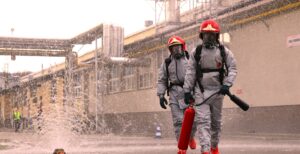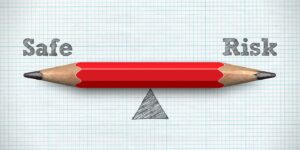
Exploring ‘Essential’ Inequities
Pam Sornson, JD
January 17, 2023
So here’s the conundrum: ‘essential‘ means ‘absolutely necessary’ and ‘indispensable,’ as in ‘an essential element must be in place, or disaster may/will follow.’ At the same time, what type of element is deemed ‘essential’ often depends on who makes that determination. As the global industrial complex restructures in the wake of COVID’s massive economic overhaul, more entities – businesses, industries, and governments – are applying the lessons learned throughout that era. They are now re-imagining how they identify, estimate, and then compensate those workers whose efforts genuinely keep the world moving forward – those who have been deemed ‘essential.’

What Work is Actually ‘Essential’?
Just a precursory view of how individual states define ‘essential’ within their borders reveals how people across the country differ in their opinion about that status. Granted, at the beginning of the pandemic, no one was certain about anything, especially not about how to respond to or mitigate the viral threat. Every government agency at every level was struggling to determine what needed to be done and who would be doing it. Adding to the national quandry was the fact that each state is unique – they all have their individual economies, populations, and regional characteristics, so no single state-based response to COVID was going to work for all states. It’s interesting, then, to look back and see the decisions made in the separate states about what services or products were ‘essential’ to them:
In late March 2020, of the 17 states that had then issued stay-at-home orders, only one elected to close its liquor stores because they were deemed non-essential. Pennsylvania closed its alcohol supply centers at the end of business on March 17th after those businesses racked up almost $30 million in sales the day before.
At the same time, ironically, Pennsylvania also determined that its medical marijuana dispensaries were “life-sustaining” and, therefore, essential. Most states that had legalized the drug also kept their suppliers open.
In Arizona, the Governor declared that the sport of golf was ‘essential’ to the state so all of its courses could remain open. Notably, Arizona’s golf industry accounted for just $2.2B in state revenues in 2019, just a small percentage of that state’s annual ~$320B GDP. The Governor, himself a golfer, stated that retaining recreational activities with appropriate safety guidelines (social distancing, in this case) facilitated the mandate.
Even gun stores were deemed ‘essential’ in some places but not in others. In California, while the state’s list of essential services did not specifically include gun shops, regional law enforcement agencies were making their own decisions about what would happen in their county. In San Diego County, they were open, while, just 120 miles away in Los Angeles, they were not.
The seemingly arbitrary determination of “essential” poses significant challenges at both the state and federal levels, as both government systems struggled to appropriately allocate funding to address COVID’s challenges.

Inequitable Pay + Inequitable Risk
The chaos created around the country by the ‘what is essential?’ question revealed a larger, more insidious reality. In many cases, those jobs that were ultimately deemed ‘essential’ were also often considered ‘menial’ and, therefore, were at the bottom of the pay rate scale. Workers in these lower economic tiers, therefore, were expected to continue working through the health crisis even though doing so exposed them to a potentially lethal virus. When those workers are also non-white, the risks posed to them by the virus multiply:
Based on 2018 data reflecting 152 million workers, while 31% of Hispanic workers and 33% of black workers were performing essential services, only 26% of white workers had the same occupation.
Black workers were particularly vulnerable to developing severe illnesses caused by COVID-19. Long-standing inequities in healthcare access by this population have resulted in the rise of several comorbidities that can complicate or conflate the severity of a COVID infection.
Workers on these lower economic tiers were also less likely to have a safety net of sick days or paid time off, so not working because of illness wasn’t often an option.
One in seven of them lacked healthcare insurance.
One in three was living in a household that earned less than $40,000 per year.
According to Chicago’s School of Public Health, numerous reports released at the beginning of the pandemic indicated that essential workers:
were more likely to be [non-white],
had lower levels of education,
were paid less than white workers, and
often lacked health insurance.
So how is it that the country that puts such a high value on the labor produced also puts such a low value on the person who’s performing it?

Should ‘Essential’ Also Mean ‘Highly Valued’?
The substantial wage and occupational inequities exposed by the pandemic reveal a long history of devaluing America’s non-white workforce. According to some economists, poor working conditions and circumstances for women and people of color are the consequence of labor laws written and passed to establish that reality. According to them, society has chosen this inequitable environment because it facilitates the enrichment of certain social classes at the economic expense of others.
The good news is that society can also change its priorities to reverse and repair these ‘essential inequities.’ Government review of fundamental economic principles – such as how to value labor – can develop policies to increase minimum wage levels and provide all workers – especially essential ones – with more protections against occupational threats such as those posed by COVID-19. Expanding tax options such as the Earned Income Tax Credit can help workers keep more of their earnings in their own pockets.
In short, the COVID-19 pandemic is giving society the opportunity to re-determine how it demonstrates its value for its labor force.


